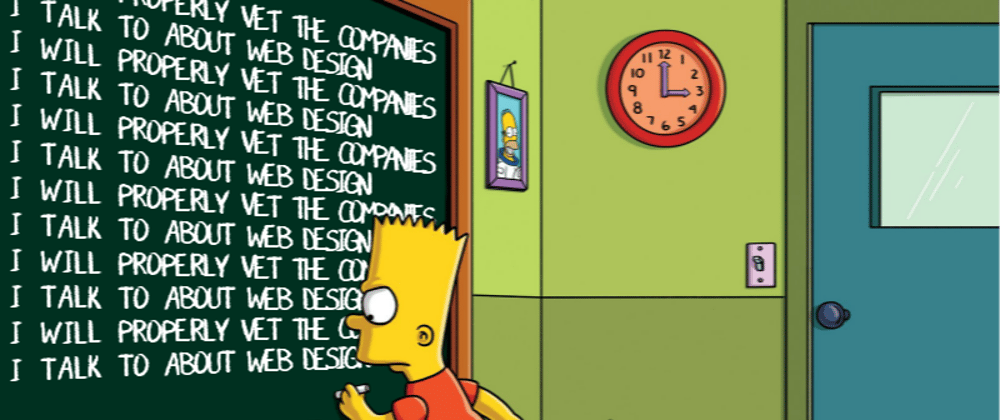
Ok. So maybe you’ve cold called a company or had a referral. Either way, you have a scheduled time on the calendar to talk to a company about web design/development.
Here’s the thing… for your own mental well being & financial well being, this should be a good fit for both parties. I remember right before I started freelancing (I was procrastinating and was too scared to start) I watched the video from RealToughCandy about when she had to drive to the dentist’s office an hour or so away then hear all the BS that they were doing. Check it out if you haven’t watched it yet. It’s a real eye opener.

DEVELOP YOUR SPIDEY SENSE
What you want to do is avoid those prospects and keep an eye out for the red flags. In other words, qualify the companies you talk to about your services FIRST before you start talking web design so you know if they’re worth your time:
*You are talking to the decision maker
*The timing of the website is reasonable… say 8 weeks or so depending on scope
*The budget works for you AND them
*Does this company actually want/desire/need your web design services and why
*What if anything would stand in the way of you guys working together
Over time, you’ll develop a spidey sense of BS and companies that just want to waste your time or are just seeking to get pricing. Both red flags.
By asking uncomfortable questions, you get right to the root of WHY a company is looking for a new website and everything you need to know. BUT. You MUST talk to the decision maker. In other words go to the CEO. They are very busy and generally won’t BS you if the company is somewhat established and not looking to screw a developer.

SIFT THEM OUT
So let’s say you get an email asking to chat about your web design services and they want to chat. Great. You should have a Calendly account setup integrated with Zoom (which is a total of less than $25 USD/month) to handle that. On the front end of the Calendly settings you get 10 questions to prompt the person making the appointment - use those 10 questions to get a ‘feel’ for the user/company.
They should be something along the lines of:
*name
*company
*title
*phone number & extension
*email
*website
*why are they interested in a new website
*what is their (reasonable) timing to have the website deployed
*what is the estimated budget for the project
*what are 3 keywords you would like to rank for
When you get the Calendly alert and the above user input doesn't match with what you want, just email them back that you're not interested. Maybe the budget is too small or the timing doesn't work. I'll do a future post about budget and pricing...
Also, have the text reminder option on there too, you want that cell phone number of the CEO so you don't have to email or call the secretary to get in touch.
Once you have these settings, you want to then have 2 reminders for the person who scheduled with you: one 24 hours in advance and a text reminder 15 minutes before.
The 24 hour reminder should be the automated reminder BUT it should have one of your testimonials on the page. Warm up the person with a testimonial from their niche - just embed it in the email and once you get a few of those testimonials, they become your ambassadors. Basically the flywheel effect happens. Your customers end up selling your own product for you to your target audience. Boom.
All of this happens so that by the time they get on the Zoom call with you, they are completely warmed up (assuming they’re serious) and receptive to you and your ideas… before the meeting even starts.

DON'T BE THAT GUY
Use the information they provided and do your due diligence. Look into them, the company, the company website, the data and keywords. I’d even look into their competitors. Have all of this information researched before hand and ready to go. One thing we teach at CoderSales is a document sheet and specific framework to use. YOU NEED TO HAVE A PROCESS.
Anyways. Ok. You’re now on the Zoom call. Have everything (all the data in different windows, like their current website, the keywords with SEMrush etc) and have a wireframe of a past project ready too. When starting the meeting, build rapport. I hear so often that developers are hard to work with and don’t listen. Don’t be that developer. Don’t be Skinny Arms Rob Lowe.
Ask questions. Then ask more questions. Listen and write notes. During the first ~25 minutes of the call, the CEO should be doing 90% of the talking. You listen, take notes then ask questions. Here is when you qualify… when you identify the ‘Why’. Why a business wants to invest in a new website. Perhaps sales have dropped… or shot up. Perhaps a competitor is crushing them with a new product or they want to rebrand because the current site doesn’t communicate their value proposition. Whatever that is, you need to hit that button. This isn’t the same as a Marketing Coordinator telling you they want an update design. No. You need to get them emotionally invested and the ‘Why’ will do it. From there, qualify them. Ask them what the timing is and reference the timing they put on the Calendly field. “So in a perfect world, you are looking for the new website to deploy in 6 weeks, is that right?” Remember, telling isn’t selling. Ask open ended questions and let them tell you. It’s more profound when the other person tells you rather than you tell them. This in turn, keeps you in full control of the Zoom Call.

BE A DETECTIVE
Ask the uncomfortable questions now. You’ve built up to this point and demonstrated you have your act together. Ask about budget, timing and what (if anything) would stand in the way of working together. Now is when you show them your process, a previous wireframe => website build and how you got there. We give our students a Sales Framework that includes a document to show previous work and how they got to the build. Use the “Why” mentioned earlier and build that into your presentation. So for example, with a new product launch, tell them that you’ll dedicate a new page just for the product and integrate testimonials when available. Then show them a past example. It’s important at this point to mention that because you’ve niched down, you can then speak their own language and have a knowledge of the industry.
By asking those questions outlined above, you get the answers YOU need… not what they need. This is a meeting to see if it works for you to work on their website. Not the other way around. You’re not a commodity, you’re an expert and have a high bar with the clients that you choose to work with. If they balk or get weirded out by those qualifying questions, it’s probably not the decision maker OR the meeting was taken to just sus you out.
You want to protect yourself from bs clients that say they’re “in” for the project… then never pay and the mental angst is too much. Or that makes you drive all over the city to meet then end up being a nightmare. Learn to qualify early (most importantly decision maker then timing) and spend time on the ones that make the most sense.







Top comments (0)